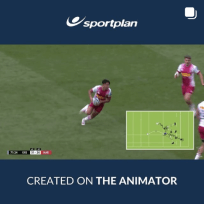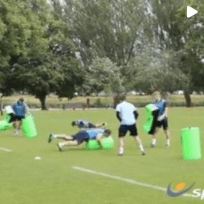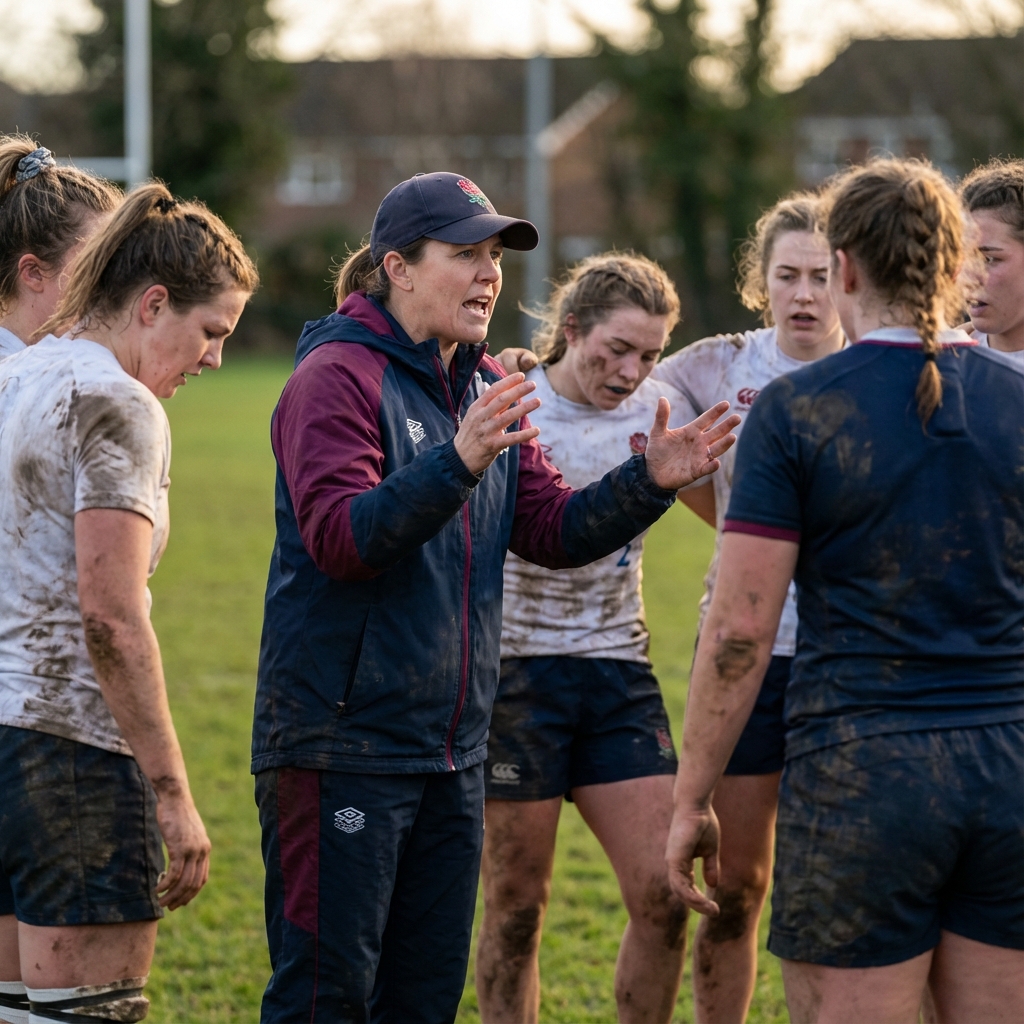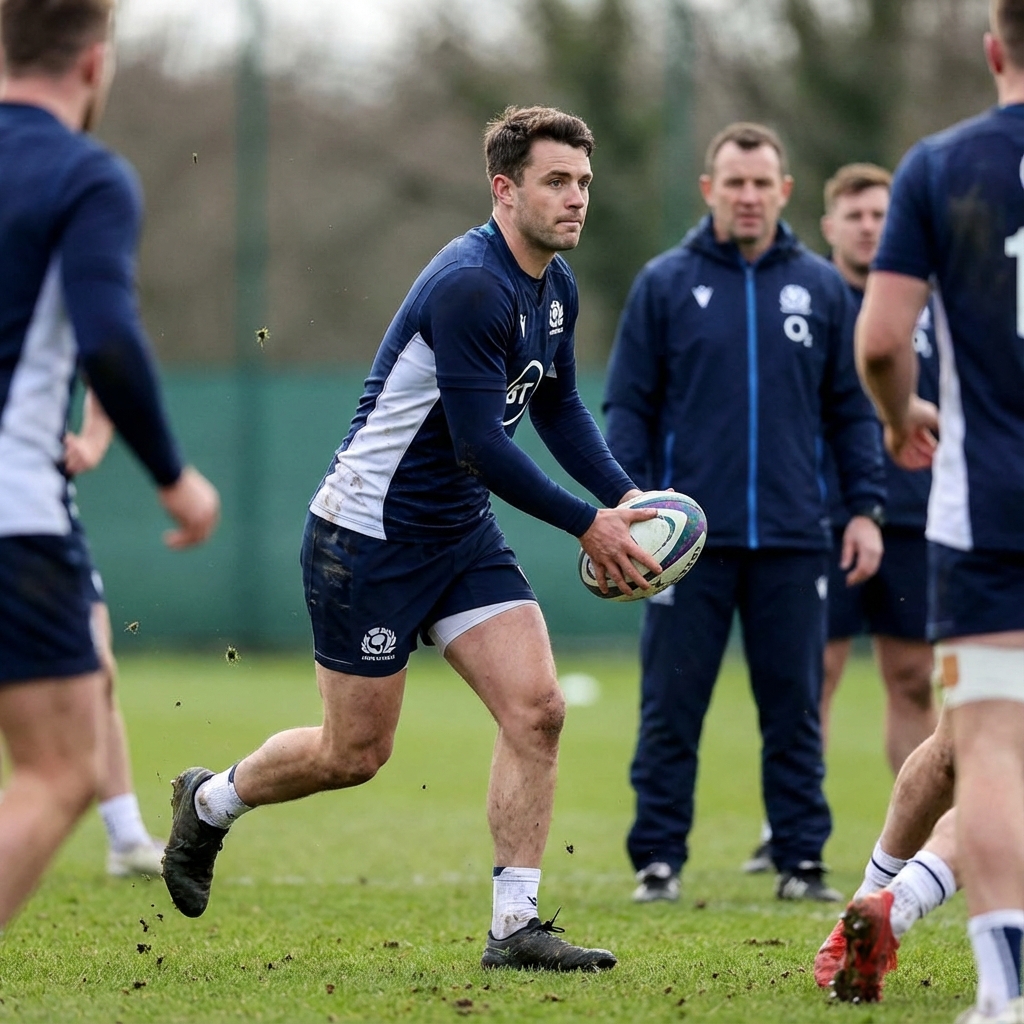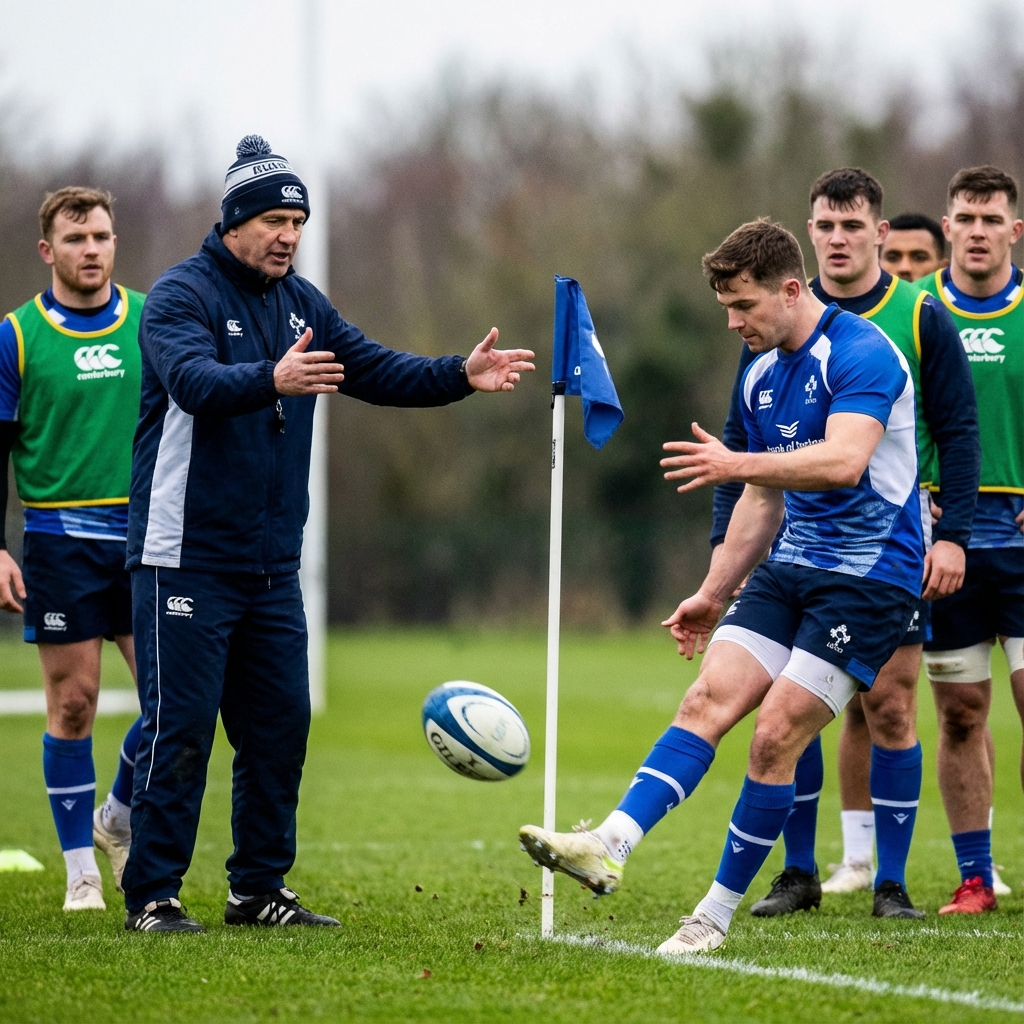Is Bridging Illegal?
Paul
submitted by email
Paul
In order to answer your question, I spoke with Ed Morrison who is the RFU's Head of Elite Referee Development.
He told me that there is actually no technical term "Bridging" in the Laws of the game. Rather there is a clear instruction that players entering the tackle area must stay on their feet. The term "bridging" is commonly used to describe a supporting player leaning on the tackled player to protect the ball from the opposition. This results in the supporting player being in a vulnerable position with their neck exposed when they are hit by the opposition trying to clear out the tackle area. With all players, but especially younger players with softer bones, this is a great concern in terms of safety.
Therefore, the Law also states that supporting players should also be able to support their own body weight and this prevents the leaning on the tackled player.
My own view is that coaches should encourage players to adopt a scrummage position over the tackled player with head up so that they are protecting possession without being in a vulnerable position.
I hope this helps and please email again if you need more information.
Simon
I think the problem is the definition of 'bridging'- as some people understand it, it is stepping over the ball & stopping in a scrumming type position to either secure / turnover posession or if you're outnumbered, slow down opposition ball. The other interpretation of bridging is as above, when a player leans/ binds onto the tackled player to seal off the ball from the opposition (we called this 'sealing' in South Africa as opposed to 'bridging'which describes the first description I gave)According to law 15.6 a player is off their feet if any part of their body (other than their feet! ;-) is supported by the ground or players on the ground. So 'sealing'/ 'bridging' a per the general understanding & application of it is illegal, but 'bridging' as in standing over the ball & protecting it/ winning a turnover is legal (as long as the player is on their feet!)... IMHO!
I discourage it with 12 - 14 year olds for the very reasons given above. Boys think that they are safe standing like this but if they were to be hit by opposing forwards driving into rucks, players could be badly hurt. Young boys are not experienced enough or physically mature enough to take this kind of collision.
The term Bridging that i'm guessing you are reffering to is illegal! It is stopping a fair contest for the ball, it matters not what level you are talking about and this year the IRB gave specific instruction to refferees to ping players that do it. As simon has said earlier, players should be able to support their own weight on their feet therefore latching on to a player on the floor doesn't meet this requirement.
There are a stack f reasons not to coach bridging, and one one in favour - it stops the other team winning the ball - is that worth a broken neck? Most junior referees will ping the bridger.
whatever you call it the practices described above can be dangerous. The over ridding criteria surely should be 'Duty of Care' particularly in the junior game. I suggest that you talk to your son's club coach post haste and inform him that 'Bridging' as no place in the game ERIC Stokes England
the first reply answered this perfectly, player in ruck situation must be on his feet, if he is 'bridging' he is not supporting himself and therefore should be considered off his feet. Many refs allow it and many do not. Definitley not at u19 level.
If I could add an update to this. There seems to be a blanket interpretation now that even if a player is on his/her feet at the ruck, if he/she cannot maintain footing without the support of the player on the floor (i.e. bridging), then the player is deemed as being off their feet.
Would a player who was briding onto the tackled player fall foul of law 16.3(e)?? "Player must have their head and shoulders no lower than their hips. Penalty%3A Free kick"
Chris, the tackler is in a different position to arriving players from the same team.
I would suggest spending time and attention on your players knowledge of what the tackler is allowed to do in this situation.
The tackler is allowed to enter the contact area from any direction so long as they regain their feet before a ruck is formed. The tackler does not have to adhere to the 'gate' and can contest the ball once back on their feet. Coach the tackler to get back to their feet ASAP.
In addition, if the player is able to regain footing, they are able to keep hands on the ball, even if a ruck is formed!
There is lots of scope to act in this area of play......
the one way of stoping Bridging is by letting the tackler fall in a U-shape...coz the player that arrives after him to secure the ball has got something to hold onto...shirt and pant and where ever the player goes that secure the ball goes he can pull the player that was tackled.... the player that secures the ball must have hes weight distributed evenly across both feet...hanging onto the player and by staying close to the ground while still supporting himself....by doing that he must have hes body position as low as possible...back in a staight line tucking hes head in onto the tackler...it is not a penalty coz the player securingthe ball is still on hes feet....as soon as bridging is involved...is all about hes body position and hes weight not beibg distibuted evenly
Some interesting points Vaughn, and some good basic key points on body position for coaches to remember. However, just one point i'd like to pick on is what you mean by the player securing the ball 'hanging onto the player'?
In my view, the one and only way to stop 'bridging' is for more consistency in the refereeing of the ruck contest. The ruck is a total mess at present, yet need not be at all, so long as players are see it as a structured contest and not a way of killing the game, I don't see a problem.
The thought process of players approaching the ruck should be 'is it winnable or not', if not, defend if yes, counter ruck with intention of turnover. The defensive mindset should always be 'every tackle is a turnover', and work with players on how they can turn a tackle into a turnover ball. Counter rucking should always be a last option, as you can leave yourself short when it does come to turnover ball and counter attack.......
what i mean buy the player hanging on the the tackled player is...the player being tackled falls like a U shape.....when he falls into a U shape the player securing the ball can hold onto the tackled players shirt and pants...thats why I said he can drag the player anywhere when the defending team tries and push him off the tackled player... U-shape with like a blanket over him holding onto the shirt and pants ( if you understand what I am trying to say
so long as the player securing isn't leaning onto the tackled player or has his shoulders below hips?
you hold onto him...with your head almost onto the tacklers ribcage.....still supporting your own bodyweight.with your back straight...legs spread wide to give you support...no matter what any ref says...it is not illegal....alsong as you dont go off your feet....according to Jonathan Kaplan Nr 1 ref in the world...
Well, technically, if the ref interprets this as dangerous play and blows up for it, there's not a lot the player can do about it. How low is the player to the ground?
I would like to say that this would be considered as a safety issue as explained by vaughn above. As a referee i would blow for his own safety since his back is not parallel to the ground but is slanted with the head being lower then his hips.
I think what I was trying to get at was how low the player is. Too low while holding on and the ref could say the player is off their feet. If you put your head on the tacklers ribcage, i'd say that is too low and the ref should blow up..
What is Bridging?...is it a ball carrier lying over the ball to secure the ball and not placing the ball within the limit of time?...and when his fellow team mates are on their feet working over the ball from the gate? Personally... my answer... if the ball carrier goes down, he is suppose to place the ball if tackled..whats it? 1 sec time? its suppose to be one movement to place the ball ..if that player still touch the ball he holds the ball while the tackler holds him,"penalty"? the ..tackler.. may get on his feet while holding the tackled player, when tackler on his feet release the tackled player in quick move to play ball... otherwise the tackled player may proceed to play the ball on the ground moving forward, the way i understand the bridging law..no player is suppose to touch a player who r off their feet by any part of their body playing the ball...it does not matter how many player r involve.
I am a teacher and coach of young players. If I see a player holding on to a tackled players shirt and shorts (sealing off) I would penalise the player for preventing the next man there, from playing the ball. Some might say that this is naive, but I think that we should encorage young players to compete for the ball and not promote cynical play.
I have just watched the Dubai sevens and at the ruck the first player is binding on the tackled play and sealing the ball. This happens at nearly every ruck and the players have obviously been coached to do this. Why are the players not being penalised. My U9 team have just played a team who have copied this approach at the ruck.
A player who is not the ball carrier, is said to be bridging when he is "off his feet" at a tackle, while attempting to play the ball. "Off his feet" means that some part of his body is supported by the ground or a player on the ground. The sanction for this is a penalty kick. A condition precedent to bridging is often a failure by the tackled player to immediately pass or release the ball and to get up or move away from it. Properly complied with, these laws ensure the continuity of the "running" game.
As a Ref-
Law 16.2 a - All players forming, joining or taking part in a ruck must have their heads and shoulders no lower than their hips.
I see that I ping it. Player 'bridging'/'sealing' that looks like that (head buried in/on ribs) I ping it, at all levels.
However, a player that arrives and locks his hands on to the tackled player but body weight on feet is playing both safe and fair. They are harder to move but if isolated will lose the battle against the tackler regained to feet and the arriving player.
As a coach -
Arrive, lock, bend knees like a front row forward, engage and hit the arriving player/re-engaging tackler. Throughout the whole process player MUST look through their eyebrows to set a strong back/neck.
What do you think guys?
Hi All,
There is clearly misunderstanding between A] BRIDGING [thats arching over the ball - like a bridge, with shoulders lower than hips, not supporting own body weight ], B] PARKING [ using a player on the floor as a 'grip fixing' point & straddling the ball to protect it , hips lower than shoulders ] & c] SEALING OFF [ lying on/ahead the tackled player to prevent the 'Jackalers' contesting the ball, sometimes engaging before the ball carrier hits the floor]
A & C are illegal, B is a valid ball protection skill but needs good coaching of technique, younger players can practice this safely and this is where getting their neck set deep into their shoulders 'turtle style' comes in. Coach expertise is the key, which is why 'technique study' is so important for all us coaches
ps...
or just coach your players to drive past the ball and if no one is there pick the ball up and continue going forwards
I have just been involved with an U10 team at the annual Surrey A Festival.
The two teams in the final have obviously been coached to get the first supporting player to lean/bind onto the tackled player who was presenting the ball, so shielding/protecting the ball. This supporting player had his back and neck exposed to the opposition coming in to ruck him of the ball.
I thought this was illegal and more importantly dangerous.
However I see players doing this on television all the time.
Why are referrees allowing this to happen. In the surrey final a number of boys were hurt because of this but nobody stopped it happening.
It takes a lot of discipline to get this right and Im afraid there are some very excited 'tough boy' rugby coaches who are cutting their teeth with their son's team.
Young mini and mini players have softer bones than their adult equivalents - fact. The law backs your decision here to penalise a player that has his back and neck exposed like that.
15.7 (b) states 'No player may prevent the tackled player from releasing the ball and getting up or moving
away from it.' With regards to the point about supporting players arriving and holding the shirts/shorts of the tackled player as a 'grip-fixing point' being legal, this is incorrect as it contravenes 15.7 (b). It is illegal and any ref who knows the laws should be penalising, so I am sure that Jonathan Kaplan wouldnt be condoing this, and I am guessing that those refereeing the junior games cited arent aware of the law.
I just watched England v Wales.
The ruck is a mess. All the players are not staying on their feet.
This is ruining the game. Why are the ref's not stopping this?
I agree William - it does seem as if refs are missing when players go over the ball and lie on other players!
Simon









